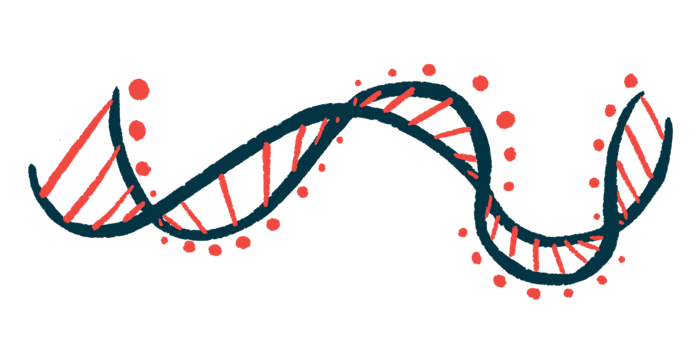ALS Link With Specific STMN2 Gene Mutation Challenged in Study
Lengthy CA repeats in STMN2 'commonly observed' in people without disease

A mutation in the STMN2 gene that consists of an excessive repeat of two nucleotides, the building blocks of DNA, is not associated with the greater risk of amyotrophic lateral sclerosis (ALS), a new study reported.
Its findings contradict previous research suggesting a link between this particular mutation and ALS.
“Although the expression level and [disease-related alterations] of STMN2 are important in ALS … our current results refute the association of the STMN2 … dinucleotide repeat with ALS,” the researchers concluded.
The study, “Questioning the Association of the STMN2 Dinucleotide Repeat With Amyotrophic Lateral Sclerosis,” was published in Neurology Genetics.
The gene STMN2, which codes for the stathmin-2 protein, plays important roles in the development and health of nerve cells. This protein’s levels are reported to be lower in ALS patients, and boosting its production is being explored as a treatment approach. A clinical trial of a therapy to potentially raise stathmin-2 levels is also in planning stages.
Earlier study tied 24 CA repeats in STMN2 to ALS risk
A recent published study linked a particular variant in STMN2 with an increased risk of developing ALS. The specific mutation, called a dinucleotide CA repeat, occurs when two nucleotides or “letters” of the genetic code (CA, in which C stands for cytosine and A for adenine) are repeated an abnormal number of times. A particular variant with 24 repeats of the “CA” sequence showed an especially strong link to ALS in this study.
A team of scientists in Canada now aimed to confirm this mutation’s link with ALS risk using a separate group of patients. Their analysis included genetic data covering 153 people with ALS, as well as 207 other adults without the disease as controls.
“We sought to replicate this observation in an independent group of ALS patients and a much larger control group,” the investigators wrote.
Results broadly did not indicate a significant association between the STMN2 dinucleotide CA repeat and ALS risk or disease features.
“We did not observe an association between longer alleles [gene variants] and ALS risk, nor did we replicate the necessity of the 24-repeat allele for this association,” the scientists wrote.
Rather, “we find that repeats well above the previously reported pathogenic [disease-causing] threshold of 19 [CA repeats] are commonly observed in unaffected individuals across different populations,” they added.
Frequently finding “STMN2 CA repeats much longer than the previously reported ALS-associated threshold” in adults without this disease strongly implies that these mutations are not pathogenic, or disease-causing, the researchers noted.
“For a variant to be actionable, it must be strongly replicated in independent cohorts [groups] and exceed the rigorous statistical thresholds applied,” they wrote.







